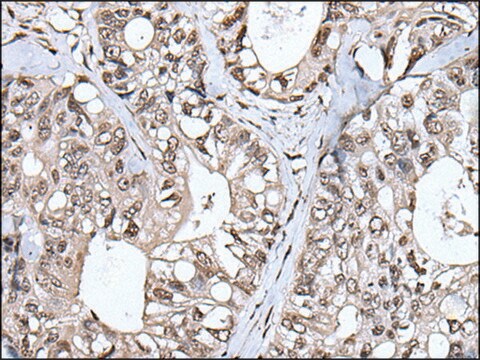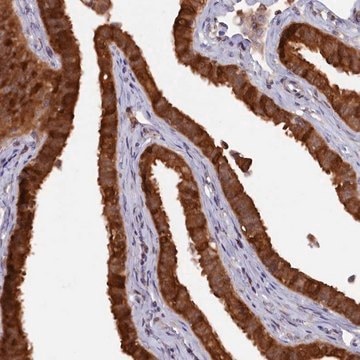MABF945
Anti-TAP2 Antibody, clone 429.4
clone 429.4, from mouse
Synonim(y):
Antigen peptide transporter 2, APT2, ATP-binding cassette sub-family B member 3, Peptide supply factor 2, Peptide transporter involved in antigen processing 2, Peptide transporter PSF2, Peptide transporter TAP2, PSF-2, Really interesting new gene 11 prot
About This Item
Polecane produkty
pochodzenie biologiczne
mouse
Poziom jakości
forma przeciwciała
purified immunoglobulin
rodzaj przeciwciała
primary antibodies
klon
429.4, monoclonal
reaktywność gatunkowa
human
metody
immunocytochemistry: suitable
western blot: suitable
izotyp
IgG1κ
numer dostępu NCBI
numer dostępu UniProt
Warunki transportu
ambient
docelowa modyfikacja potranslacyjna
unmodified
informacje o genach
human ... TAP2(6891)
Opis ogólny
Specyficzność
Immunogen
Zastosowanie
Immunocytochemistry Analysis: A 1:400 dilution from a representative lot detected TAP2 in HeLa, but not in the ST-EMO B-lymphoblastoid cell line derived from a patient with homozygous TAP2 deletion (TAP2-/-) (Courtesy of Peter van Endert, Ph.D., Institut Necker Enfants Malades (INEM), Centre De Medecine Moleculaire, Paris, France).
Inflammation & Immunology
Jakość
Western Blotting Analysis: 0.5 µg/mL of this antibody detected TAP2 in 10 µg of Raji cell lysate.
Opis wartości docelowych
Postać fizyczna
Przechowywanie i stabilność
Inne uwagi
Oświadczenie o zrzeczeniu się odpowiedzialności
Not finding the right product?
Try our Narzędzie selektora produktów.
Kod klasy składowania
12 - Non Combustible Liquids
Klasa zagrożenia wodnego (WGK)
WGK 1
Temperatura zapłonu (°F)
Not applicable
Temperatura zapłonu (°C)
Not applicable
Certyfikaty analizy (CoA)
Poszukaj Certyfikaty analizy (CoA), wpisując numer partii/serii produktów. Numery serii i partii można znaleźć na etykiecie produktu po słowach „seria” lub „partia”.
Masz już ten produkt?
Dokumenty związane z niedawno zakupionymi produktami zostały zamieszczone w Bibliotece dokumentów.
Nasz zespół naukowców ma doświadczenie we wszystkich obszarach badań, w tym w naukach przyrodniczych, materiałoznawstwie, syntezie chemicznej, chromatografii, analityce i wielu innych dziedzinach.
Skontaktuj się z zespołem ds. pomocy technicznej








